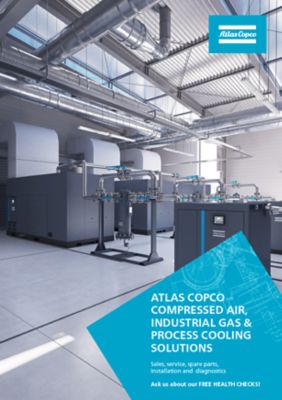The true cost of air compressor
Everybody has experienced so-called “sticker shock”. The sensation of looking at the cost of an item and thinking that it is quite high. However, for many products, the figure on the price tag is only a small portion of its total cost. That is why it is key to consider the total cost of ownership (TCO), i.e. the true air compressor cost of buying, owning, operating, and ultimately recycling machinery.
How much does an air compressor cost?
Compressors are a prime example of how pronounced the difference can be between initial investment and total cost of ownership. The purchase price of an industrial air compressor makes up only about 20% of its lifecycle costs. Most of it, approximately 80% of the TCO, can be attributed to energy expenses and the rest to maintenance.
This means that the worst thing one can do when buying a compressor is to only look at the purchase price without factoring in the follow-up costs. As a rule of thumb, the least expensive compressors are generally not very energy efficient, which means that they cost more in the long run. This only makes them a good deal in the few cases where the compressor is rarely used.
Limiting air compressor costs
In most other cases, the best way to save money over time is to limit compressor operating costs. Because they make up such a big share of the total cost of ownership, the most logical place to start is to lower energy expenses. That can most easily and effectively be accomplished by purchasing an energy-efficient oil-free or oil-injected compressor.
- Our VSD+ variable speed drive compressor can reduce energy consumption by up to 50%. It saves its users a lot of money for many years. The enormous energy savings allow operators to quickly recoup the entire investment costs – often within a year.
- Many countries offer tax benefits or other incentives for switching to compressors that help preserve energy.
In addition to their efficiency and the associated savings, premium compressors have other advantages. - Their reliability can lower compressor operating costs by extending the machine’s service life and maintenance intervals.
- A dependable compressor can avoid expensive downtimes while the high-quality air it produces protects the downstream equipment.
Many of these benefits are not just financial in nature. Lower energy consumption also contributes to a less impacted environment, as does eliminating waste by having compressors and other equipment that last longer.
Hidden compressor operating costs
In addition to the obvious savings a premium compressor can generate, there are also “soft costs” that have to be taken into account. Some examples:
- a compact compressor frees up space in production facilities,
- a silent compressor is more appealing for employees and reduces the need for purchasing sound protection,
- and one that generates few emissions benefits the health of employees.
For all of these reasons it pays off to research not only the price of compressors but also the associated operating costs of each of them. And if you have any questions about how to calculate the total cost of ownership, our experts will be happy to advise you.

